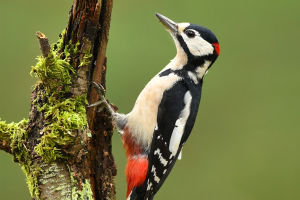Every phenomenon of life is as complex as outer space, and while the realm of life may seem wildly chaotic, there are specific laws to follow.
Nature holds endless mysteries, and today, we will explore the mysteries of animal forms.
Why is the zebra striped? But the leopard is spotted? Is there any pattern to these patterns?
Leopards are agile hunters, athletic, elegant, and fast runners. They can both swim and climb trees. They possess a sharp temperament, a keen sense of smell, hearing, and sight, exceptional intelligence, vital stealth, and a long tail that aids in maintaining balance when running.
They are also among the few cats that can adapt to different environments. The cheetah is often referred to as the Asian subspecies, while the African subspecies is commonly known as the leopard.
The spots on the cheetah's body serve a distinctive function as it inhabits the African savannah, where light is intense. When the cheetah hides in the grass, the spots help it to blend in.
The cheetah's entire body is covered with spots, with only the tail tip showing stripes. The spots under the cheetah's eyes resemble tear tracks, protecting its eyes from glare and allowing it to see far distances.
In the wild, the eyesight of animals like antelopes can be very poor, and leopards, hidden in the grass, can almost become one with their surroundings with the help of their spots.
Research indicates that no two leopards in the world have the same spots. Moreover, different species of leopards possess distinct spot patterns. For instance, the spots of the clouded leopard resemble black clouds, while those of the snow leopard are lighter and appear grayish-white.
The spots on leopards serve as natural camouflage. When sunlight filters through the leaves and falls upon the leopard's golden fur, its spots blend with the surrounding environment, creating a stunning camouflage that is difficult to discern.
When a leopard ambushes in the woods, its spot patterns merge with the shade of trees and leaves, seamlessly blending into its surroundings and evading detection.
Similarly, zebras possess distinctive black and white stripes that are crucial to their survival. These stripes are believed to serve as disruptive camouflage, making it challenging for predators like lions and hyenas to target individual zebras within a herd.
The shifting pattern of stripes confuses predators and disrupts their ability to gauge the zebra's speed and direction.
The unique patterns found on animals like zebras, leopards, and cheetahs are not merely ornamental but are intricately linked to their survival in their respective habitats.
These patterns have evolved over millions of years, fine-tuned by natural selection to provide these animals with the best possible chances of survival in their environments. From camouflage to communication and thermoregulation, these patterns serve diverse functions that highlight the remarkable adaptations of these fascinating creatures.
Beyond camouflage, animal patterns are crucial in social interactions and species recognition. For zebras, each individual's stripe pattern is unique, akin to a fingerprint, aiding in identification within the herd.
Studies suggest that zebra stripes may also serve as a defense mechanism against biting insects, such as horseflies, by disrupting their ability to land on the zebra's skin.


